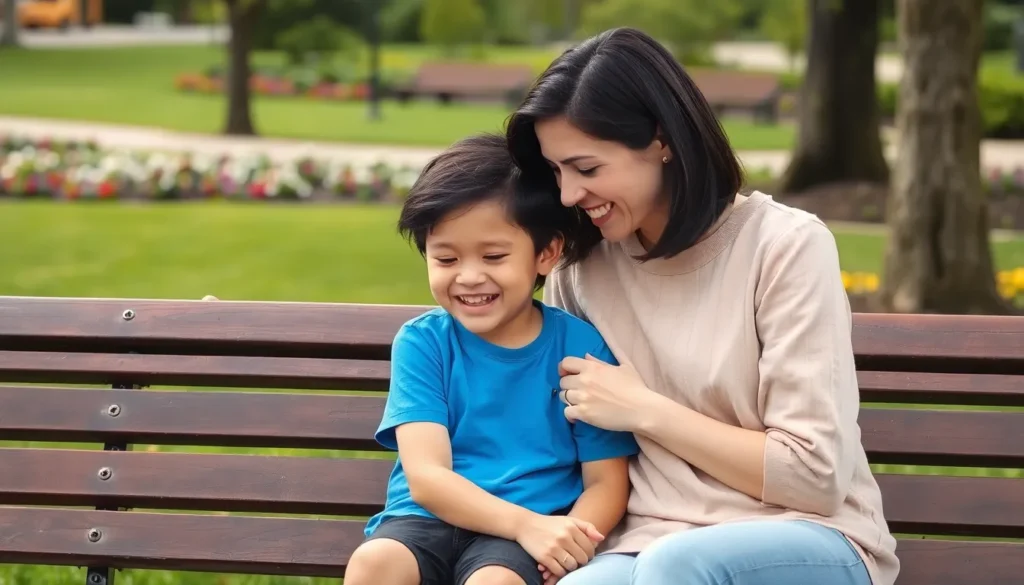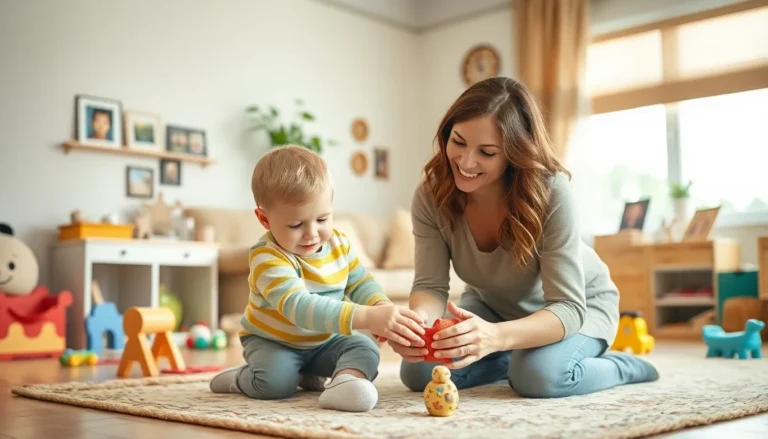Table of Contents
ToggleNavigating the world of parenting can feel like a wild rollercoaster ride, especially when it comes to understanding the terms “solo” and “single” parenting. While both paths involve raising children without a partner, the nuances between them can be as tricky as getting a toddler to eat broccoli.
Solo parenting often means one parent is fully responsible for the kids, while single parenting might involve co-parenting arrangements with the other parent still in the picture. It’s like comparing an independent superhero to a dynamic duo—both have their unique challenges and triumphs.
Curious about how these two styles stack up against each other? Buckle up as we dive into the distinct worlds of solo and single parenting, shedding light on the joys and hurdles each brings to the table.
Understanding Parenting Structures
Solo and single parenting both involve raising children without a partner but differ in their structure and dynamics. Solo parenting refers to the scenario where one individual carries the sole responsibility for child-rearing, often facing the full spectrum of challenges alone. Resources may be more limited, as support systems need to be established or relied upon outside of the family structure.
Single parenting, in contrast, may occur alongside co-parenting arrangements. In this model, one parent operates independently but still maintains communication and shared responsibilities with the other parent. This arrangement allows for some shared decision-making regarding the child’s health, education, and upbringing.
Understanding these distinctions highlights the varied experiences parents encounter. Solo parents typically juggle all aspects of parenting alone, which can lead to increased stress and fatigue. Single parents might experience relief through co-parenting, as they can collaborate on scheduling and decision-making.
Support networks can play a significant role in both parenting structures. Solo parents may seek help from friends, family, or community resources to alleviate some burdens. On the other hand, single parents may find their network interconnected with the other parent, enabling a balance that benefits the children involved.
Awareness of these differences helps clarify the emotional and logistical aspects of each parenting style. Each structure presents unique challenges but also opportunities for growth and connection, shaping the parenting experience for both adults and children.
Solo Parenting Defined

Solo parenting refers to the situation where one parent exclusively takes on the responsibility of raising children without a co-parent. This scenario often involves managing all aspects of child-rearing independently.
Characteristics of Solo Parenting
Solo parents typically exhibit resilience and adaptability. They create structured routines to provide stability for their children. Frequently, they depend on external support systems like friends and family for emotional and logistical assistance. Limited spare time necessitates efficient decision-making and prioritization of tasks. Additionally, solo parents often juggle multiple roles, balancing work and home life.
Challenges of Solo Parenting
Solo parenting presents unique obstacles. Increased stress frequently arises from managing all responsibilities solo. Emotional fatigue can result from consistently meeting children’s needs without shared support. Limited resources may complicate access to childcare or financial assistance. Therefore, solo parents often experience feelings of isolation. Finding time for personal self-care proves difficult, impacting overall well-being.
Single Parenting Explained
Single parenting involves raising a child while maintaining a level of communication and shared responsibilities with the other parent. This approach can include co-parenting arrangements that aid in collaborative decision-making.
Characteristics of Single Parenting
Single parents often exhibit strong communication skills. They prioritize engagement with the other parent to ensure the child’s needs are met. Flexibility in scheduling becomes essential for balancing personal life and parenting duties. Emotional resilience assists them in navigating challenges, while a robust support network, including friends and family, provides additional resources. Many single parents cultivate independence, motivating them to create structured routines that promote stability for their children.
Challenges of Single Parenting
Single parenting comes with unique challenges that can create stress. Juggling responsibilities, such as work and childcare, often leads to feelings of overwhelm. Managing time effectively becomes crucial since tasks must be completed independently. Emotional difficulties can arise from navigating conflicts with the co-parent and addressing personal feelings of isolation. Financial strains also impact single parents, as they typically manage household expenses alone. Accessing childcare options can further complicate daily life, making support networks vital for shared responsibilities and emotional relief.
Key Differences Between Solo and Single Parenting
Solo and single parenting both involve raising children without a partner, but they differ in emotional and logistical aspects.
Emotional Impact on Children
Children raised in solo parenting environments often experience intense emotional challenges. Sole responsibility can lead to feelings of neglect or insecurity. Support is crucial; without it, kids may feel overwhelmed by the parent’s stress. In contrast, children with single parents might navigate a more structured emotional landscape. Regular communication between co-parents helps children perceive stability. They often develop stronger adaptability skills due to interaction with both parents. Emotional resilience becomes a common trait in children of single parents as they learn to balance diverse parenting styles.
Societal Perceptions
Society often views solo parents with a mix of empathy and misjudgment. They might face stereotypes about being overwhelmed or underprepared. On the other hand, single parents frequently encounter recognition for their efforts in managing dual roles. Various media representations highlight the challenges and triumphs of single parenting, promoting a more positive perspective. Community support varies, often favoring single parents who connect with co-parenting networks. Solo parents may struggle more to find relatable experiences in society, leading to isolation. Overall, societal perceptions shape how each type of parent experiences their journey and influences their children’s understanding of family dynamics.
Understanding the differences between solo and single parenting is crucial for recognizing the unique challenges and strengths each style brings. Solo parents often navigate their journey independently while single parents benefit from shared responsibilities and communication. Both paths require resilience and adaptability as they face different emotional and logistical hurdles.
Support networks play a vital role in both scenarios helping to ease the burdens of parenting. The emotional well-being of children is also affected by these dynamics shaping their perceptions of family and relationships. Ultimately both solo and single parenting present opportunities for growth connection and a deeper understanding of family life.







